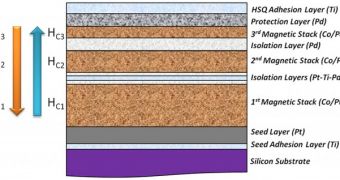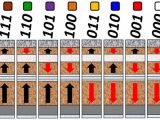Capacity is the only advantage that hard disk drives have over solid-state drives these days, which is why researchers are so focused on improving it. And it seems they've managed it quite splendidly.
Engineers from the Florida International University have come up with a way to write data in 3D on magnetic hard disk drives.
3D data layering was achieved on optical disks by adding extra layers where bits could be placed, but that couldn't be done on magnetic-based storage units, even if they do use disks as well.
That limitation has been overcome though. No longer will superparamagnetic limits interfere with our wish to cram more than 4 terabytes on a single HDD.
Superparamagnetic limits means that magnetic bits can only be so small before neighboring bits or changes in temperature start to randomly alter the magnetism, corrupting data.
Heat-assisted magnetic recording (HAMR) allows for the bits to become much smaller, but they still need to be placed in 2D, limiting capacity to 60 TB or so.
Naturally, that's still a lot, and will probably reach the market before 3D data-based HDDs do.
Anyway, researchers in Florida have created an HDD platter that has more than one magnetic layer, three layers to be exact. They are insulated from each other of course.
Conventional HDD platters can store a single bit, but these triple-stack layers allow magnetic sites to store up to eight (north/north/north, south/south/south, N/N/S, N/S/S, etc.). That's why it's believed that this method can lead to capacities of over 100 TB.
To read data, a weak magnetic head measures the vector sum of the three magnetic fields. Writing is done by a special recording head, because each layer has slightly different properties, meaning they need to be written by a specific type and strength of magnetic field.

 14 DAY TRIAL //
14 DAY TRIAL // 
